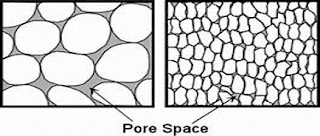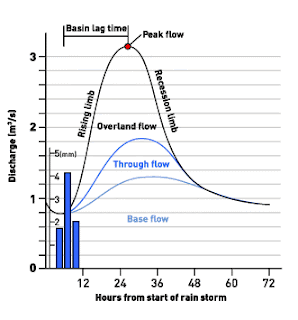THE INTERNAL STRUCTURE OF EARTH

The direct observation of the interior of the earth is not possible as the interior becomes hotter with increasing depth. Much of our knowledge about internal structure of the Earth is revealed primarily by seismic waves (compressional P-wave and Shear S-wave) generated from the earthquake. The seismic wave velocities vary with pressure (depth), temperature, mineralogy, chemical composition and degree of partial melting. A sudden change in seismic wave velocity at a seismic discontinuity indicates the change physical and chemical properties of material inside the earth. Discontinuity which lies between crust and mantle at depth of ~70 Km is Mohorovicic discontinuity. Gutenberg's discontinuity lies between the mantle and the core at depth ~2885 Km. Between the inner and outer core, the Lehm...

